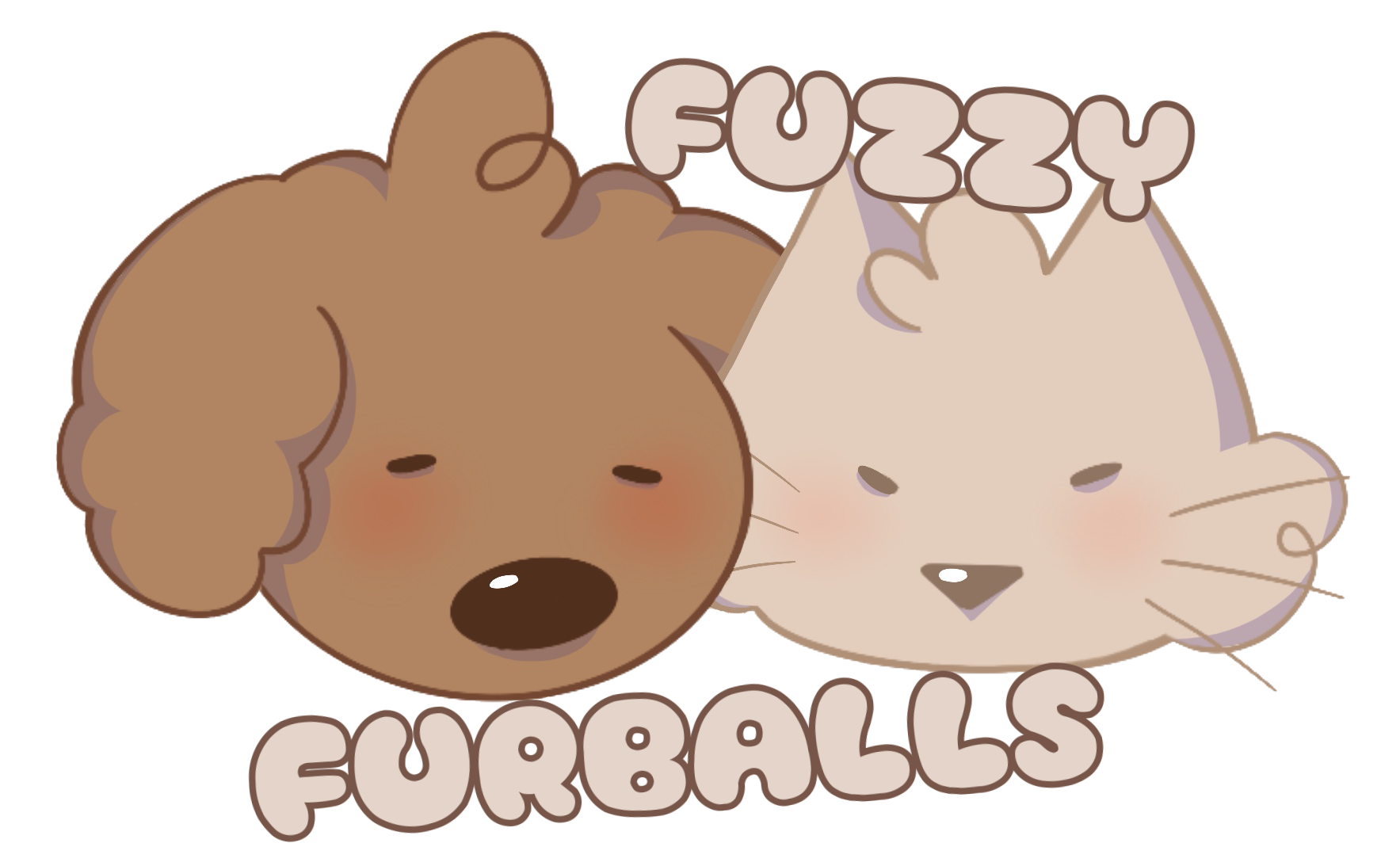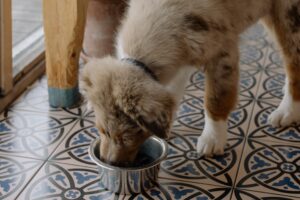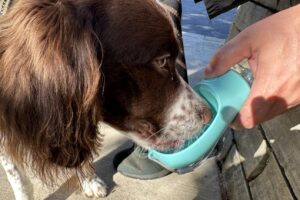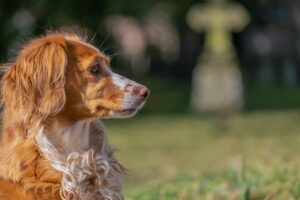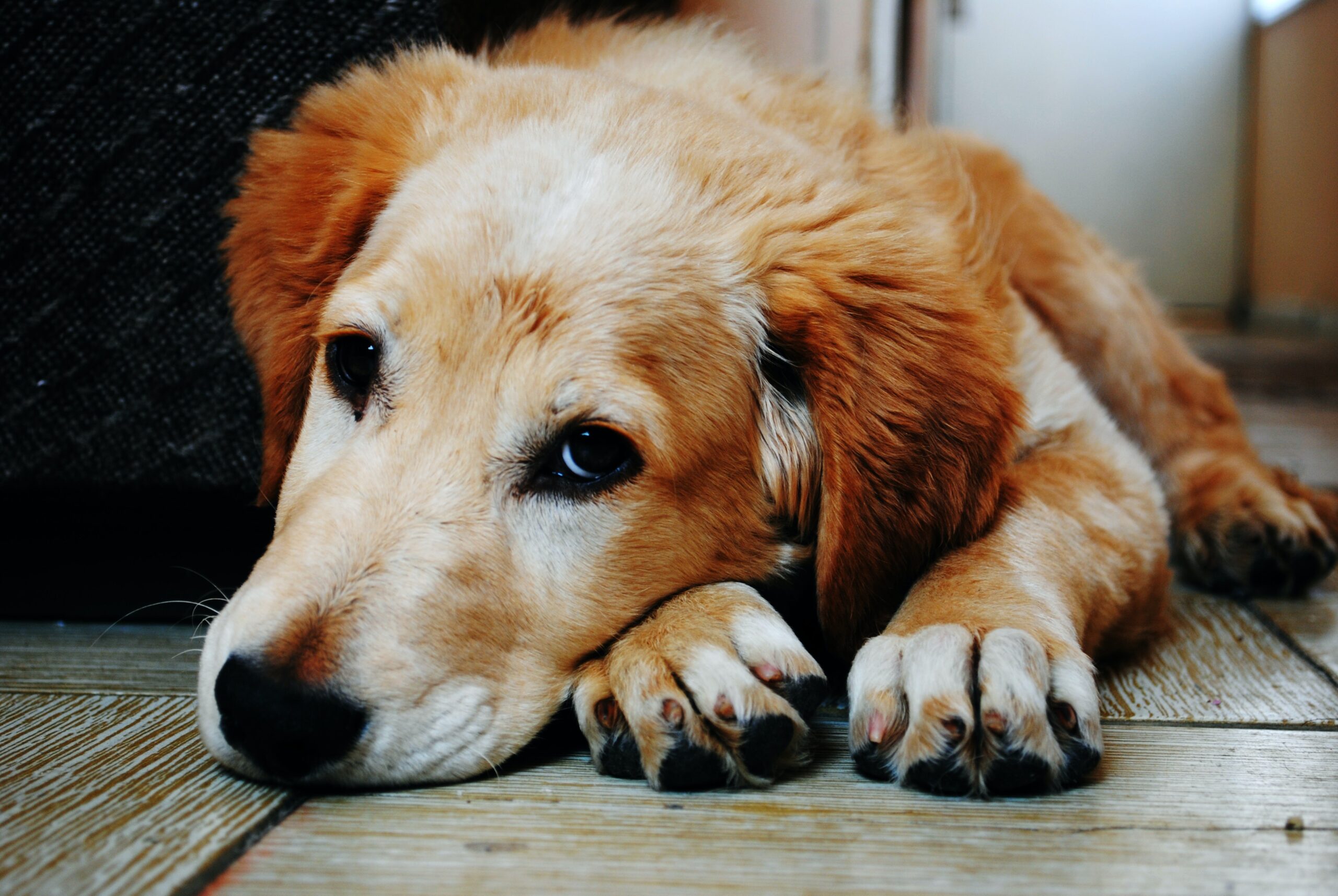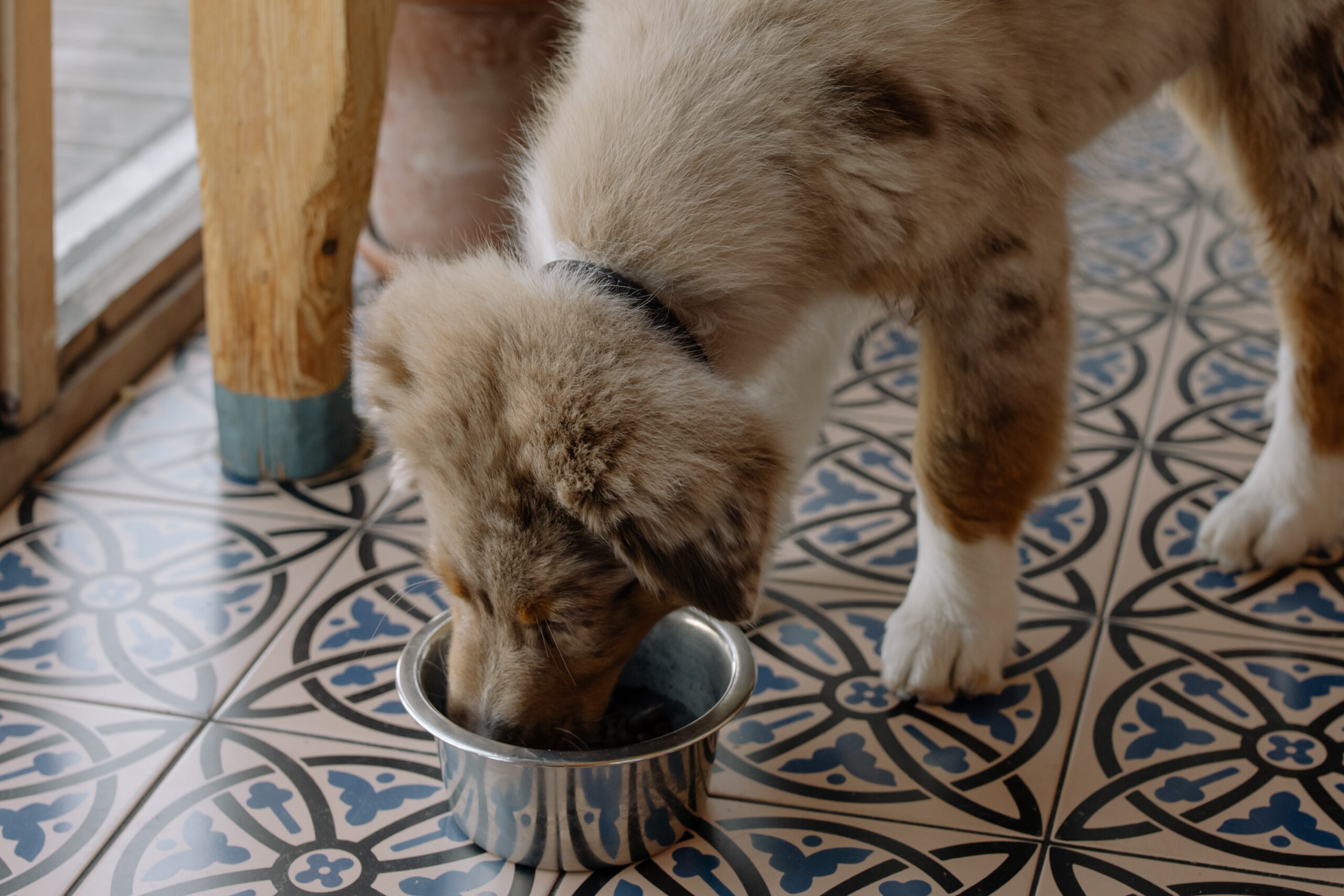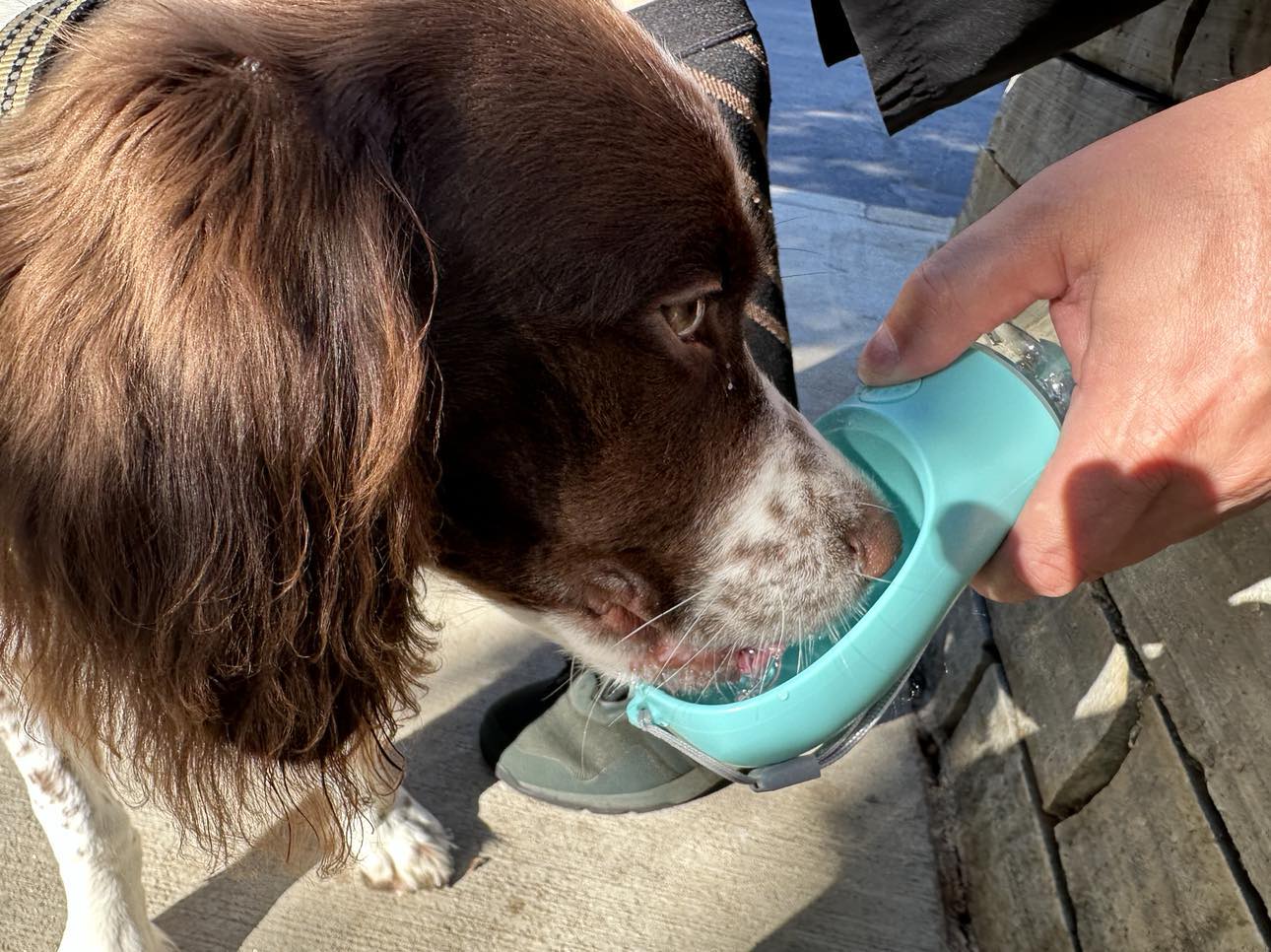If you’ve ever noticed your furry friend cowering in the corner or nervously eyeing that harmless ceiling fan, you’re not alone. The intriguing phenomenon of dogs disliking or being afraid of fans has puzzled many pet owners. While some dogs seem indifferent to these spinning devices, others exhibit clear signs of discomfort or fear when a fan is turned on.
Dog owners from all walks of life have shared their experiences of witnessing their beloved companions’ puzzling aversion to fans. Tales of dogs whining, barking, or even retreating to distant corners of the house whenever a fan is in operation are not uncommon. In some cases, dogs may even refuse to enter rooms with fans, leading to concerns about their well-being and quality of life.
The primary objective of this article is to delve into the possible explanations behind dogs’ dislike or fear of fans. By exploring various factors that influence canine behavior and sensory perception, we hope to shed light on this curious aspect of our four-legged friends’ lives. Additionally, we aim to offer practical insights and potential solutions for dog owners who may be grappling with this issue.
In the following sections, we will examine dogs’ sensory perception and how it may contribute to their reactions to fans. We will also explore the role of fans as foreign objects and how past experiences and environmental factors can play a significant role in shaping their behavior. Furthermore, we will discuss the potential impact of breed predisposition and how behavioral conditioning can influence dogs’ responses. Finally, we will highlight the importance of seeking professional advice when necessary to ensure the well-being and comfort of our canine companions.
So, if you’ve ever wondered why your dog gives that fan a suspicious side-eye or acts jittery whenever it’s turned on, keep reading as we embark on a journey to understand this intriguing aspect of canine behavior. Lets unlock the secrets behind why some dogs seem to harbor an inexplicable aversion to those seemingly harmless spinning blades.
Understanding Dogs’ Sensory Perception
How dogs perceive the world through their senses
To comprehend why some dogs dislike fans, we must first delve into their unique sensory perception. Dogs, like many animals, experience the world through a heightened sense of hearing, smell, and sight. These senses play a crucial role in shaping their behaviors and responses to various stimuli in their environment.
The acute sense of hearing and how it affects their reaction to fans
Dogs possess an exceptional ability to hear sounds at frequencies far beyond the range of human hearing. This acute sense of hearing allows them to detect even the faintest noises, which can be both a blessing and a curse. While it helps them sense potential dangers or alert their owners to approaching visitors, it also makes them susceptible to loud or unfamiliar noises, such as the whirring of a fan.
For some dogs, the noise generated by fans, especially those with mechanical issues or poorly lubricated parts, can be bothersome and unsettling. The continuous hum or intermittent clicking may trigger their natural flight response, leading them to avoid or retreat from the source of the noise.
Sensitive smell and its role in their response to moving air
A dog’s sense of smell is nothing short of remarkable. Their olfactory receptors can detect scents in concentrations that are nearly imperceptible to humans. When it comes to fans, it’s not just the noise that might concern dogs; it’s also the moving air.
Airflow from fans can carry various odors around the room, mixing and dispersing scents in a way that is foreign to dogs. This can be overwhelming or confusing to them, especially if they pick up unusual or unpleasant smells from the moving air. Additionally, dogs rely heavily on their sense of smell to assess their environment and the people or other animals around them. When the air is continuously shifting, it may hinder their ability to accurately interpret their surroundings, leading to unease or discomfort.
In some cases, dogs may have had negative past experiences associated with moving air, such as getting startled by sudden gusts or having objects blown towards them. These experiences can leave a lasting impression and contribute to their aversion or fear of fans.
Understanding how dogs perceive their environment through their heightened senses is a crucial step in deciphering their behavior towards fans. As we continue our exploration, we will uncover more potential reasons behind this intriguing phenomenon, seeking to provide dog owners with the knowledge needed to help their furry companions feel more at ease in the presence of fans.
Fans as Foreign Objects
Dogs’ natural instinct to be cautious about unfamiliar things
Dogs have an inherent instinct to approach new objects with caution. This behavior is a result of their survival instincts, which have been ingrained in their ancestors over generations. In the wild, encountering unfamiliar items or situations could potentially pose a threat to their safety, so being cautious helps them avoid harm.
When faced with something they haven’t encountered before, like a fan, dogs may initially exhibit signs of wariness or anxiety. They may observe the object from a distance, trying to assess whether it poses any danger. In some cases, this instinctual caution can evolve into fear or aversion, especially if the object emits noises or exhibits unpredictable movements.
Fans as novel and potentially intimidating objects
From a dog’s perspective, fans can be quite peculiar and intimidating devices. The sight of spinning blades or the constant movement of the fan grille may appear abnormal and unfamiliar, which could trigger their cautionary instincts. The sound of the fan motor adds another layer of peculiarity that can contribute to their discomfort.
Moreover, when a fan is turned on, the sudden gusts of moving air can be unsettling for dogs. They might not immediately understand the source of the airflow or why it is happening, leading to further confusion and unease. In some cases, dogs might even perceive the fan as an animate or threatening entity due to its seemingly autonomous behavior, compounding their fear or dislike.
Similar reactions to other unfamiliar household items
Interestingly, dogs’ reactions to fans can be comparable to their responses to other unfamiliar household items. Items such as vacuum cleaners, hairdryers, or even some types of home appliances can trigger similar cautionary behaviors. These reactions are rooted in their primal instincts to be wary of anything they haven’t encountered before.
As responsible pet owners, understanding these natural instincts and reactions can help us approach the issue with empathy and patience. For dogs who are hesitant or fearful of fans, gradual exposure and positive reinforcement can be effective methods to help them acclimate to these seemingly alien objects. By doing so, we can help our canine companions feel more secure and comfortable in their environment.
In the following sections, we will delve deeper into specific factors that contribute to dogs’ aversion to fans, including the impact of noise sensitivity and airflow, the role of past traumatic experiences, environmental factors, breed predisposition, and the importance of behavioral conditioning. Armed with this knowledge, we can work towards creating a more reassuring and harmonious living space for our beloved dogs.
The Noise Factor
The role of fan noise in dogs’ anxiety and discomfort
Fan noise can be a significant contributing factor to dogs’ anxiety and discomfort around these devices. While some dogs may tolerate low-level humming or gentle whirring, others can be highly sensitive to even subtle noises. The continuous, repetitive sound of a fan motor can create a constant background noise that may be distressing for noise-sensitive dogs.
For dogs with noise anxiety or phobia, the sound of a fan can trigger a fight-or-flight response. They may exhibit signs of stress, such as trembling, panting, drooling, or seeking hiding spots to escape the perceived threat. The noise can also disrupt their sleep patterns and overall sense of security, leading to behavioral issues and a decline in their well-being.
Noise sensitivity in different dog breeds
Noise sensitivity varies significantly among different dog breeds. Some breeds, like the Border Collie, German Shepherd, and Labrador Retriever, are known for their resilience to loud noises and are less likely to be affected by fan sounds. On the other hand, breeds such as the Chihuahua, Greyhound, or Shih Tzu may have a predisposition to noise sensitivity.
Additionally, individual dogs within the same breed can display different levels of noise sensitivity, influenced by their unique personalities and past experiences. It is essential for dog owners to be aware of their pets’ sensitivities and reactions to noise, as this understanding can help them address any potential issues effectively.
Ways to mitigate the noise issue
- Gradual desensitization: For dogs that are fearful of fan noises, gradual desensitization can be an effective approach. Start by introducing the fan at a distance with the motor turned off. Reward your dog with treats and praise for calm behavior. Gradually increase the exposure time and decrease the distance while continuing positive reinforcement.
- White noise or background sounds: If the noise from the fan is particularly bothersome for your dog, consider using white noise or calming background sounds to mask the fan noise. Soft music, soothing nature sounds, or specialized white noise machines can create a more relaxing auditory environment for your pet.
- Creating safe spaces: Provide your dog with a designated safe space where they can retreat when they feel overwhelmed by the fan’s noise. This can be a cozy corner with their favorite bedding, toys, and perhaps an item with your scent to provide comfort.
- Behavioral training: Professional dog trainers can help implement behavior modification techniques to address noise sensitivity in dogs. Through positive reinforcement training, dogs can learn to associate the fan’s noise with positive experiences, reducing anxiety over time.
- Consultation with a veterinarian: If your dog’s noise sensitivity is severe and significantly impacts their well-being, it’s essential to seek guidance from a veterinarian. They can help rule out any underlying medical issues and recommend appropriate interventions, including the use of anti-anxiety medications if necessary.
By acknowledging and addressing the noise factor, we can help our canine companions better cope with fans and create a more peaceful living environment for both pets and owners alike.
Airflow and Anxiety
How airflow from fans can create unease in dogs
The airflow generated by fans can contribute to dogs’ unease and anxiety. Dogs rely heavily on their sense of touch, and when they feel air movement that they cannot see, it can be disconcerting. The sensation of the breeze on their fur and skin might be confusing or unfamiliar, leading to a heightened state of alertness.
Moreover, the constant movement of the air can be perceived as unpredictable, which can be distressing for dogs that thrive on routine and predictability. The swirling currents might also interfere with their ability to track scents effectively, causing further disorientation.
Association with negative experiences (e.g., blowing objects, loud noises)
For some dogs, their aversion to fan airflow might stem from previous negative experiences associated with blowing objects or loud noises. A fan’s airflow can cause lightweight objects, such as papers or curtains, to move unexpectedly, which might have frightened or startled the dog in the past. This association could lead them to associate fans with potential danger or stress.
Similarly, some fans can produce rattling or clicking sounds due to loose components or mechanical issues. If a dog has had negative encounters with such noises, they may become apprehensive around fans, anticipating uncomfortable or startling sounds.
Addressing anxiety caused by air movement
- Controlled exposure: Gradually introduce your dog to the sensation of moving air by operating the fan on its lowest setting. Observe their reactions and offer positive reinforcement when they exhibit calm behavior. Over time, increase the fan’s speed incrementally as your dog becomes more comfortable.
- Fan blade covers: Consider using fan blade covers to help minimize the visual impact of the spinning blades. This might help reduce any anxiety related to the sight of the fan in motion.
- Positive reinforcement: Reward your dog with treats, affection, and praise when they display calm behavior in the presence of the fan. This positive reinforcement can help create positive associations and build their confidence around fans.
- Noise distraction: If your dog is particularly sensitive to the noise of the fan, try using background noise, like calming music or white noise, to distract them from the fan’s sound.
- Professional guidance: In cases of severe anxiety or persistent aversion to fans, consult a veterinarian or a qualified dog behaviorist. They can offer personalized advice and develop a comprehensive behavior modification plan to help your dog overcome their fear.
As responsible pet owners, it’s essential to approach our dogs’ anxiety with patience and empathy. With the right techniques and support, we can help our furry friends feel more at ease around fans and create a more relaxed and harmonious living environment for everyone involved.
Past Traumatic Experiences
How negative past encounters may shape dogs’ current behavior
Just like humans, dogs can be profoundly affected by negative past experiences. If a dog had a traumatic encounter with a fan or any other similar object in the past, it could leave a lasting impression, shaping their current behavior and attitude towards fans. These past negative encounters might include incidents like getting caught in a fan’s blades, being startled by the sudden movement or noise, or experiencing an accidental injury related to the fan.
The memory of such events can trigger fear, anxiety, and avoidance behaviors whenever they encounter a fan or similar objects again. Even if the initial experience was not directly related to a fan but involved a similar noise or movement, the association could lead to generalized fear and aversion towards fans.
Identifying signs of trauma in dogs and their response to triggers
Recognizing signs of trauma in dogs is crucial for understanding and addressing their fear or aversion towards fans. Common signs of trauma include:
- Avoidance behavior: The dog may actively try to avoid any area with a fan or react with fear if approached near a fan.
- Shaking or trembling: The dog may exhibit trembling or shaking when exposed to fans or related stimuli.
- Excessive panting and drooling: Anxiety caused by trauma can lead to increased panting and drooling.
- Hiding or seeking comfort: The dog may seek hiding spots or seek comfort from their owners during fan-related events.
- Aggression or vocalization: In severe cases, the dog might exhibit aggressive behavior or vocalize (barking, whining) out of fear.
- Gradual desensitization: Slowly reintroduce the dog to fans in a controlled and positive manner. Begin by having the fan off and let the dog explore it at their own pace. Gradually turn the fan on at a low speed, offering treats and praise for calm behavior.
- Counter-conditioning: Create positive associations with the fan by rewarding the dog with treats or favorite toys when they approach or interact with it. This process helps replace fear with positive emotions.
- Provide a safe environment: Designate a safe space for the dog where they can retreat to if they feel anxious or overwhelmed. This space should be a calm and comforting area away from the fan.
- Professional help: If the trauma-related behavior persists or worsens, consider seeking the assistance of a qualified dog behaviorist or trainer. They can develop a personalized behavior modification plan to address the dog’s specific needs.
- Be patient and supportive: Overcoming trauma takes time, and it’s essential to be patient and supportive throughout the process. Avoid forcing the dog into situations that may trigger fear and let them progress at their own pace.
By addressing past traumatic experiences and providing positive reinforcement, we can help our dogs gradually overcome their fear of fans and regain confidence in their surroundings. A supportive and understanding approach can make a world of difference in helping our furry companions lead happier and more relaxed lives.
Environmental Factors
Influence of the environment on dogs’ behavior towards fans
The environment in which a dog lives plays a significant role in shaping their behavior towards fans. Various environmental factors can influence their comfort level and overall reaction to fans. For instance:
- Temperature: Dogs are sensitive to changes in temperature, and the presence of a fan may provide much-needed cooling during hot weather. However, extreme temperatures, either too cold or too hot, can affect their tolerance for fan use.
- Humidity: High humidity levels can affect a dog’s ability to regulate their body temperature effectively. In such conditions, the airflow from a fan can be beneficial in promoting evaporative cooling and making them feel more comfortable.
- Indoor air quality: The quality of the indoor air can impact a dog’s respiratory health. If the fan is stirring up dust or allergens, it could contribute to respiratory issues and discomfort.
- Noise pollution: In a noisy environment, the sound of the fan might blend in with other sounds, reducing its potential to cause anxiety. Conversely, in a quiet environment, the fan noise might be more pronounced and trigger a stronger reaction from noise-sensitive dogs.
Temperature, humidity, and their impact on dogs’ comfort level
Dogs are susceptible to heatstroke and heat-related illnesses, especially in hot and humid conditions. During periods of high temperature and humidity, the fan can be a valuable tool in helping dogs stay cool and comfortable. Adequate airflow can assist in regulating their body temperature through evaporative cooling, preventing overheating.
However, it is essential to consider the ambient temperature and humidity level when using a fan. If the environmental conditions are excessively hot and humid, relying solely on a fan may not be sufficient to keep your dog cool. In such cases, additional measures like providing access to fresh water, creating shaded areas, and avoiding outdoor activities during peak heat hours are essential for their well-being.
Creating a dog-friendly environment during hot weather
- Access to water: Ensure that your dog has access to fresh water at all times, especially during hot weather. Hydration is critical for their comfort and overall health.
- Shade: Create shaded areas in your home and outdoor spaces where your dog can seek relief from the sun and high temperatures.
- Proper ventilation: In addition to using fans, ensure that your home is well-ventilated to allow air circulation and prevent stuffiness.
- Limit outdoor activities: Avoid rigorous outdoor activities during the hottest parts of the day, typically between 10 am and 4 pm, to prevent overheating.
- Cool surfaces: Lay out cool, damp towels or mats for your dog to lie on, providing a refreshing place to rest.
- Ice treats: Frozen treats or ice cubes can be a fun and cooling treat for your dog during hot weather.
Remember that every dog is unique, and their tolerance to temperature and environmental conditions can vary based on breed, age, and overall health. Observing their behavior and adjusting the environment accordingly can help ensure they remain comfortable and safe, particularly during hot weather when fans can provide valuable relief.
Breed Predisposition
Certain breeds more prone to disliking fans
Just as different dog breeds exhibit varying temperaments and physical characteristics, they can also have diverse reactions to fans or other household items. While individual personalities play a significant role, certain breeds are more prone to disliking fans or being sensitive to environmental changes. For instance:
- Small and toy breeds: Many small dog breeds, such as Chihuahuas, Dachshunds, and Yorkshire Terriers, are known for their skittish nature and sensitivity to new stimuli, which may include fans.
- Sight hounds: Breeds like Greyhounds and Whippets have heightened senses, particularly sight. The sudden movement of fan blades might trigger their instinct to chase, leading to discomfort or avoidance.
- Working breeds: Some working dog breeds, such as German Shepherds and Border Collies, are known for their high levels of alertness and sensitivity to changes in their environment, including the presence of fans.
Understanding breed-specific traits and their implications
Understanding breed-specific traits is crucial in comprehending a dog’s reaction to fans and other aspects of their environment. Breeds have been selectively bred for specific purposes over generations, resulting in unique characteristics and behaviors. These traits can influence how a dog perceives and responds to fans:
- Energy levels: High-energy breeds may be more prone to anxiety or restlessness in response to new stimuli like fans. Ensuring they get sufficient exercise and mental stimulation can help alleviate any discomfort.
- Sensory sensitivity: Dogs with highly developed senses, like sight hounds and working breeds, may be more alert to the movement and noise of fans.
- Temperament: Breeds known for their shyness or nervousness may be more likely to dislike fans, especially if they have not been adequately exposed to them during early socialization.
Tailoring approaches based on breed tendencies
When addressing a dog’s aversion to fans, it’s essential to consider their breed tendencies and individual personality. Tailoring your approach based on their specific traits can be beneficial:
- Gradual exposure and positive reinforcement: For breeds with heightened sensitivity or caution, slow and gradual exposure to fans can help build positive associations. Use treats and praise to reinforce calm behavior.
- Providing outlets for energy: High-energy breeds may benefit from additional physical and mental stimulation to help reduce anxiety related to fans.
- Socialization: Early and positive socialization with fans and other household items can help puppies, regardless of breed, develop confidence and adaptability.
- Safe spaces: Allowing dogs to retreat to safe spaces when they feel overwhelmed by fans can be particularly helpful for breeds prone to anxiety.
- Professional guidance: If your dog’s breed-specific traits significantly impact their response to fans, seeking advice from a dog behaviorist or trainer with experience in breed-specific issues can be beneficial.
Remember that while breed tendencies can provide insights into a dog’s behavior, each dog is an individual. It is essential to approach their aversion to fans with patience, understanding, and consideration of their unique needs and personality. By doing so, you can help your canine companion feel more comfortable and secure in their environment.
Behavioral Conditioning
How positive or negative reinforcement can shape dogs’ responses
Behavioral conditioning plays a crucial role in shaping dogs’ responses to various stimuli, including fans. Both positive and negative reinforcement can influence how dogs perceive and react to fans:
- Positive reinforcement: Rewarding desirable behaviors with treats, praise, or affection can create positive associations with fans. For example, when a dog approaches or remains calm in the presence of a fan, providing treats or verbal praise can reinforce the behavior, encouraging them to repeat it in the future.
- Negative reinforcement: While negative reinforcement involves the removal of an aversive stimulus when the desired behavior is displayed, it is not recommended in this context. Using negative reinforcement, such as scolding or punishing a dog for their aversion to fans, can worsen their anxiety and fear.
Training techniques to help dogs become more comfortable around fans
- Gradual desensitization: Introduce the fan at a distance and observe your dog’s reaction. Gradually decrease the distance and increase the exposure time while providing positive reinforcement for calm behavior.
- Counter-conditioning: Create positive associations with the fan by offering treats or rewards whenever your dog is near it or shows curiosity towards it.
- Familiarization: Allow your dog to explore the fan at their own pace when it is turned off. Let them sniff it and investigate it to build familiarity and reduce novelty-related anxiety.
- Using distractions: During fan exposure, engage your dog with interactive toys or games to distract them from any discomfort they might feel.
- Clicker training: Clicker training can be a helpful tool in positively reinforcing desired behaviors. By associating the clicker sound with rewards, you can encourage your dog to associate the presence of the fan with positive outcomes.
The importance of patience and consistency in training
Patience and consistency are paramount when helping your dog become more comfortable around fans. Every dog learns and adapts at its own pace, and it’s crucial to respect their individual needs:
- Be patient: Avoid rushing your dog or forcing them to interact with the fan. Respect their boundaries and give them time to adjust gradually.
- Stay consistent: Establish a regular training routine and stick to it. Consistency in your approach and expectations will help your dog understand what is expected of them.
- Avoid force or punishment: Using force or punishment can exacerbate fear and anxiety, potentially leading to more significant behavioral issues. Instead, focus on positive reinforcement to build confidence and trust.
- Create a calm environment: During training sessions, maintain a calm and soothing atmosphere to help your dog feel safe and relaxed.
- Seek professional help if needed: If you encounter challenges in helping your dog overcome their aversion to fans, consider seeking assistance from a certified dog trainer or behaviorist. Their expertise can be invaluable in tailoring a suitable training plan for your dog’s specific needs.
Remember, training takes time and effort, but with patience, consistency, and positive reinforcement, you can help your furry companion feel more at ease around fans, contributing to a happier and more harmonious relationship between you and your beloved dog.
Seeking Professional Advice
When to consider seeking assistance from a veterinarian or professional dog trainer
Knowing when to seek professional advice is crucial in addressing your dog’s aversion to fans effectively. Consider reaching out to a veterinarian or professional dog trainer in the following situations:
- Severe anxiety or aggression: If your dog’s fear or aversion to fans leads to severe anxiety, aggression, or self-destructive behavior, professional intervention is necessary to ensure the safety and well-being of your dog and those around them.
- Persistent avoidance behavior: If your dog consistently avoids areas with fans or shows extreme distress when exposed to them, despite your efforts to desensitize and counter-condition, professional guidance can be beneficial.
- Trauma-related issues: Dogs that exhibit signs of trauma in response to fans or similar stimuli may require specialized assistance to work through their past experiences.
- Lack of progress: If you have been consistently working with your dog to overcome their fear of fans, but they show little to no progress, an expert can provide insights and adjustments to the training approach.
How experts can help identify underlying issues
Veterinarians and professional dog trainers have the expertise to identify underlying issues contributing to your dog’s aversion to fans. They can conduct a thorough assessment, taking into account various factors such as breed tendencies, past experiences, overall health, and individual temperament.
Additionally, experts can recognize signs of anxiety, stress, or trauma that might not be apparent to the untrained eye. Identifying these underlying issues is crucial for developing a tailored and effective behavior modification plan.
Potential solutions and management strategies recommended by professionals
Professionals can offer a range of potential solutions and management strategies based on their assessment of your dog’s unique situation. These may include:
- Behavior modification plans: Customized training programs designed to gradually acclimate your dog to fans in a positive and supportive manner.
- Medication: In severe cases of anxiety or fear, veterinarians might recommend short-term anti-anxiety medication to help your dog cope during the training process.
- Environmental adjustments: Experts may advise changes to your home environment to create a more calming and comfortable space for your dog, including the strategic placement of fans.
- Desensitization techniques: Utilizing specialized desensitization exercises and counter-conditioning methods that are tailored to your dog’s specific needs.
- Training exercises: Engaging in specific training exercises to build your dog’s confidence and improve their ability to cope with stressful situations.
- Management and safety measures: Implementing safety protocols and management strategies to prevent exposure to fans in situations where training is not possible or practical.
Seeking professional advice is not a sign of failure; rather, it shows that you prioritize your dog’s well-being and are dedicated to helping them overcome their fear or aversion. With the guidance of experts, you can develop an effective plan to support your furry companion and create a happier and more stress-free living environment for both of you.
Conclusion
The aversion or fear of fans displayed by some dogs can be attributed to a combination of factors. Dogs’ heightened senses, including acute hearing and sensitive smell, can contribute to their anxiety in response to fan noises and moving air. Additionally, past negative experiences, unfamiliarity with fans as foreign objects, and breed-specific traits can shape their behavior towards these household devices.
As responsible pet owners, it is crucial to recognize and address our dogs’ aversion to fans with empathy and understanding. Understanding their individual temperament, past experiences, and breed tendencies can guide us in developing effective strategies to help them overcome their fear or discomfort. Patience, positive reinforcement, and gradual exposure are essential components of successful behavior modification.
Ignoring or dismissing our dogs’ aversion to fans can lead to prolonged anxiety and stress, affecting their overall well-being and quality of life. By proactively addressing the issue, we can help our furry friends feel more comfortable, confident, and secure in their living environment.
Responsible pet ownership involves ensuring the physical and emotional well-being of our beloved dogs. This includes creating a safe and comfortable living space, considering their individual needs, and seeking professional advice when necessary. A well-adjusted and content dog is more likely to lead a happy and healthy life, strengthening the bond between pet and owner.
As dog owners, we have a duty to provide our furry companions with a supportive and nurturing environment. By being attentive to their fears and aversions and taking proactive steps to address them, we demonstrate our commitment to their happiness and overall welfare.
In conclusion, understanding the reasons behind some dogs’ aversion to fans and taking appropriate action to address their concerns is essential for fostering a harmonious relationship between pets and owners. By acknowledging their unique needs and providing a supportive environment, we can create a safe, comforting, and happy space for our canine companions to thrive and flourish.
